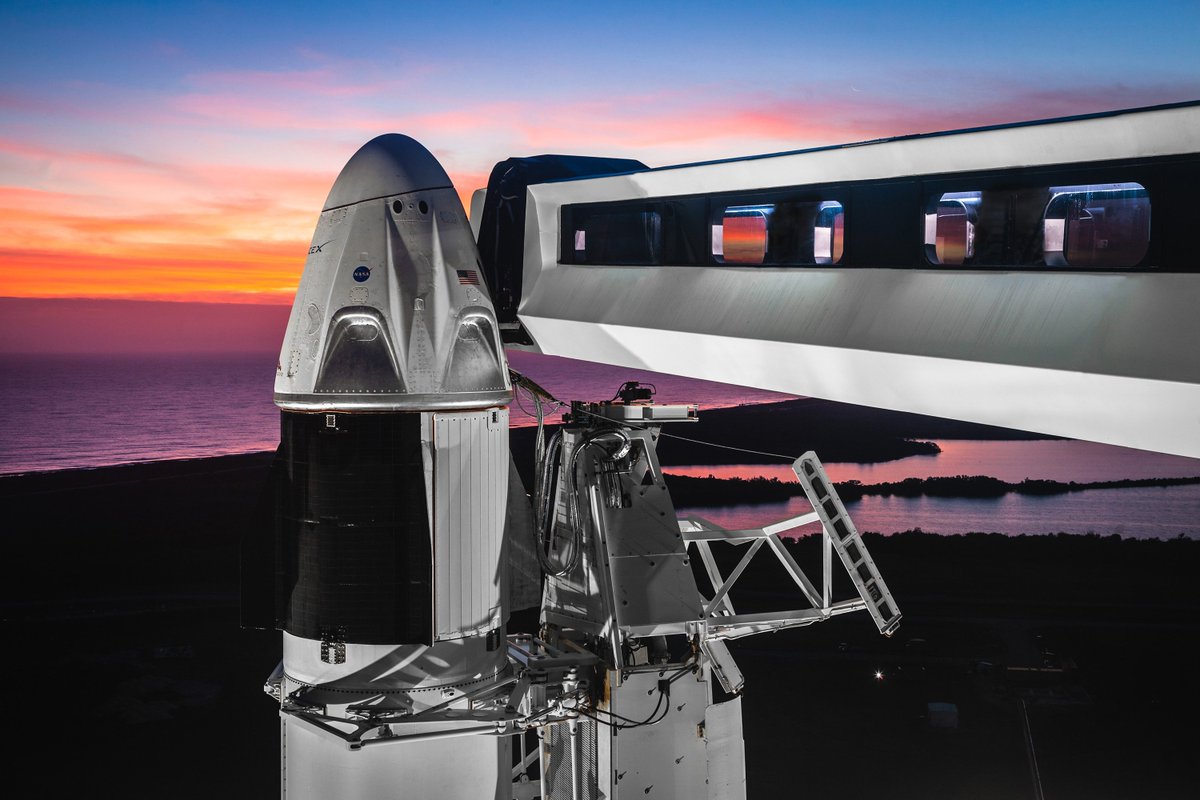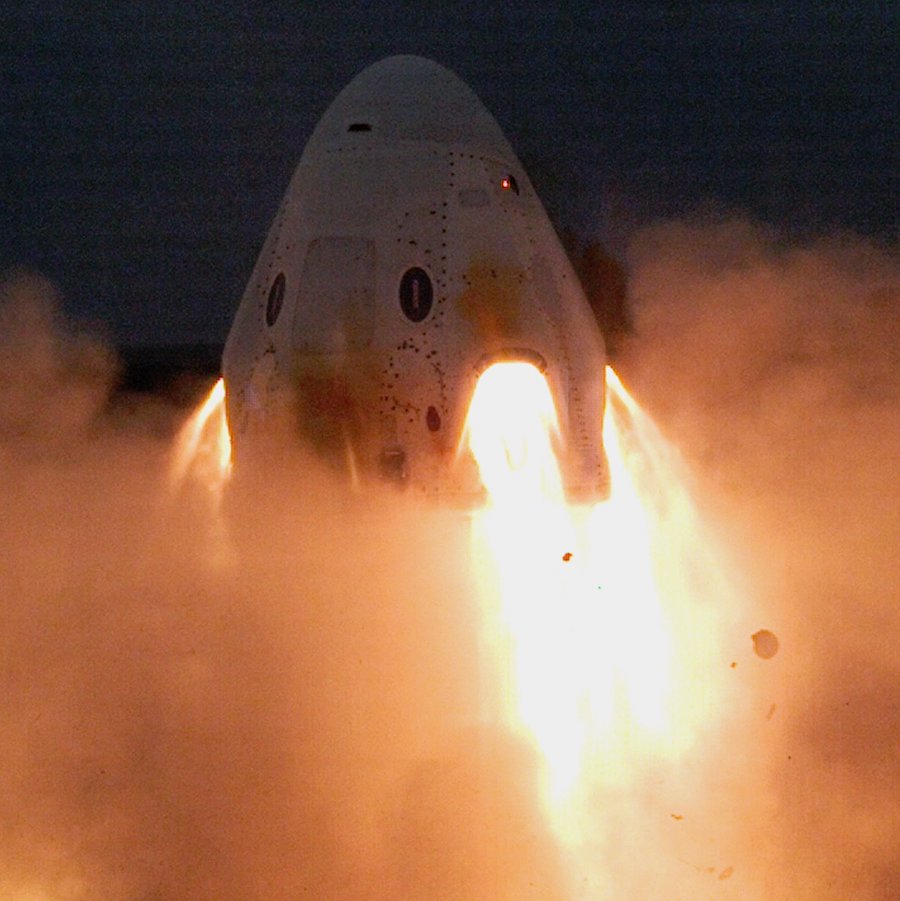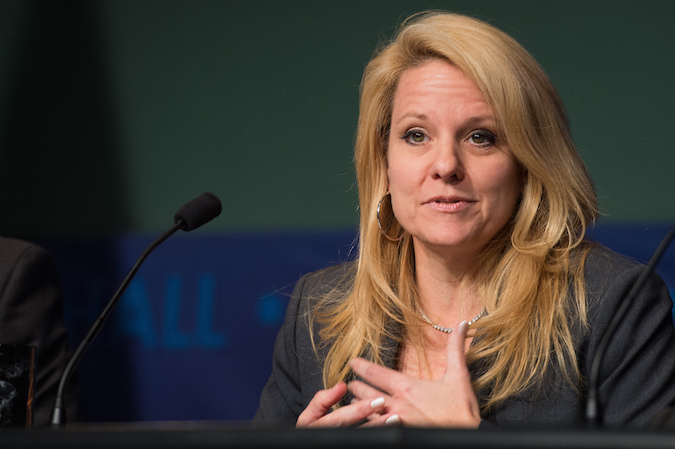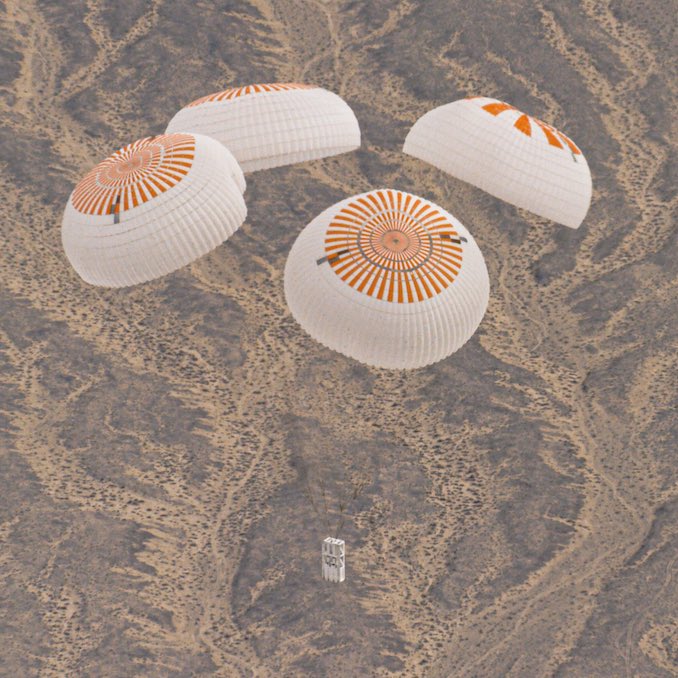
Five-and-a-half years ago, SpaceX founder Elon Musk revealed SpaceX’s Crew Dragon spacecraft, a sleek-looking human-rated spaceship with 3D-printed engines, a roomy stylized interior and touchscreen controls. Now SpaceX’s first ship to ferry astronauts — with numerous design changes introduced since 2014 — is about to leave the company’s factory for final testing before launching early next year.
Two big launches are on tap to close out development of the Crew Dragon spaceship.
The first flight, called an in-flight abort test, will verify the capsule can safely escape a rocket failure during launch. That test launch, which is scheduled for no earlier than Jan. 4 at NASA’s Kennedy Space Center in Florida, will not have any astronauts on-board.
Assuming the satisfactory completion of the abort demonstration, along with a series of parachute drop tests, the Crew Dragon could be ready for its final exam as soon as February, when NASA astronauts Bob Behnken and Doug Hurley will fly to the International Space Station, according to Gwynne Shotwell, SpaceX’s president and chief operating officer.
The mission by Behnken and Hurley will pave the way for operational Crew Dragon flights to rotate crews between Earth and the space station. The Crew Dragon, along with Boeing’s Starliner crew ship, will end U.S. reliance on Russian Soyuz spacecraft for astronaut transportation since the retirement of the space shuttle in 2011.
Five-and-half years after the unveiling of the ship’s design, the Crew Dragon capsule still sports the same futuristic, aerodynamic look. But inside, much has changed since Musk’s glitzy presentation of a spaceship prototype on May 29, 2014.
At that time, SpaceX was performing regular cargo delivery flights to the space station using a first-generation model of the Dragon spacecraft. The Crew Dragon, also called Dragon 2, is designed to carry humans and supplies to the station under contract to NASA.
“We definitely learned a lot,” Shotwell said Friday. “NASA warned us (that) crew is going to be 10 times harder (than cargo). And I think we were like, 10 times harder? What does that mean? What does that look like? How does that feel? You just don’t know until you start into the program.”
Gone is SpaceX original plan of using rocket thrusters to perform precise vertical helicopter landings for crew returns. Instead, four parachutes will slow the capsule for splashdowns at sea.

SpaceX has redesigned elements of the ship’s abort propulsion system after an explosion destroyed a test capsule in April, and engineers beefed up parachute risers to address concerns about structural loads during descent. NASA also required safety enhancements to helium pressurant tanks and Merlin engines on the Falcon 9 rockets that will launch Crew Dragon missions.
Musk said in 2014 that piloted missions using the Crew Dragon could be flying in 2016. Now that won’t happen until early 2020, SpaceX says.
That schedule slip is not unique to SpaceX. Boeing, NASA’s other commercial crew provider, has experienced years of delays caused by technical problems.
SpaceX has flown a Crew Dragon spaceship on an unpiloted demonstration to the space station. Boeing plans to perform a similar test flight before the end of the year, and both companies expect to fly astronauts in 2020.
In a discussion with reporters Friday at SpaceX’s headquarters and factory in Hawthorne, California, Shotwell identified four main reasons for the Crew Dragon delays.
“We had an architecture that we wanted to fly and land propulsively,” Shotwell said. “We thought it was the safest way to do it. Technically, it was complex, and in addition, as NASA and SpaceX were going down this journey, it became clear to us it was going to very difficult to certify that.”
SpaceX intended to use the Crew Dragon’s eight side-mounted SuperDraco abort thrusters to slow down for targeted landings on the ground. “You’ll be able to land anywhere on Earth with the accuracy of a helicopter, which is something I think a modern spaceship should be able to do,” Musk said in 2014.
But developing such a capability proved complicated.
“So we said, ‘OK, not only is it complex for the spacecraft, we don’t see a path to certifying this in the timeframe that we want,'” Shotwell said Friday. “So we pulled the plug on that technology. So we wasted time. We learned a lot, but we spent some time on that. In the end, if you pull that out, there are elements in the vehicle that you have to redesign.”

A requirement change from NASA also contributed to delays, Shotwell said.
After SpaceX had already designed the interior layout of the Crew Dragon spacecraft, NASA decided to change the specification for the angle of the ship’s seats due to concerns about the g-forces crew members might experience during splashdown.
The change meant SpaceX had to do away with the company’s original seven-seat design for the Crew Dragon.
“With this change and the angle of the seats, we could not get seven anymore,” Shotwell said. “So now we only have four seats. That was kind of a big change for us.”
She said the explosion of a Crew Dragon capsule on a test stand at Cape Canaveral in April added three-to-four months to the ship’s development schedule. The accident April 20 resulted in no injuries, but it destroyed the spacecraft SpaceX flew to the space station on the commercial crew program’s first orbital test flight the month before.
Investigators traced the cause of the explosion to a leaky valve inside the capsule’s high-pressure abort propulsion system. The leak allowed nitrogen tetroxide to leak into the propulsion system’s helium pressurization lines, which are designed to rapidly prime the SuperDraco thrusters to fire up in quick response to a launch emergency.
As the pressurization system activated during the ground test, a slug of nitrogen tetroxide was forced back into the faulty titanium valve, triggering an explosion. Experts spent months studying the physics of the accident, and learned new information about how titanium components used in aerospace vehicles might ignite under certain conditions.
SpaceX replaced the suspect valve in future Crew Dragon spacecraft with a single-use burst disk designed to rupture during activation of the SuperDraco abort thrusters, which would only occur during a launch failure. SpaceX test-fired the Crew Dragon’s eight SuperDraco engines on a test stand at Cape Canaveral last month to verify the design change.
“The fourth thing (that’s caused delays) is the parachutes,” Shotwell said.
SpaceX is performing a series of drop tests using the latest version of the Crew Dragon parachutes, called the Mk3 design. The new Mk3 parachutes, provided by Airborne Systems, include changes to address concerns about parachute loads discovered during the return of a Dragon cargo ship in August 2018.
“NASA had, since the Apollo program, a way of determining the loads in the risers on the parachutes,” Shotwell said. “They made a (conservative) assumption … from the Apollo program. We did it. Boeing did it. We were just following their standard.”
Since uncovering the parachute problem in 2018, SpaceX has instrumented the risers — or suspension lines — on Dragon flights.
“This riser is getting way more load than any of our models have ever predicted,” she said. “So NASA’s like, ‘OK, this is good learning. So our way of analyzing margin has not been as robust as we thought.’
“You have to basically make the risers more robust, which makes the parachutes heavier and larger,” she continued. “But the capsule is designed. I can’t make the capsule bigger. That pushes us (out) another 18 months. Then we had to go to thinner canopy material, so it’s been kind of trial and error.”
In response, NASA asked SpaceX and Boeing to perform additional parachute tests to gather more data and increase their confidence in their reliability.
The Crew Dragon capsule will use four main chutes, while the lighter first-generation Dragon cargo capsule uses three. SpaceX will transition to using the Dragon 2 vehicle for resupply missions to the station next year, and retire the Dragon design that’s been flying since 2010.
“We’re the ones that found this issue,” Shotwell said. “I think we know parachutes better than anybody on the planet right now … So we worked on the risers, we worked on the stitching, we worked on the canopy material.”

NASA aimed in 2010 — at the start of the commercial crew program — to have commercial crew ferry ships ready for space missions with astronauts in 2015. But Congress did not fully fund the Obama administration’s budget requests for the privatized space taxi program until fiscal year 2016, resulting in several years of delays
Since then, myriad technical problems have further pushed back the commercial crew schedules for SpaceX and Boeing.
NASA has awarded a series of commercial crew agreements to SpaceX valued at more than $3.1 billion to fund the lion’s share of the Crew Dragon development effort. Boeing has received more than $4.8 billion in NASA funding in the same time period.
Shotwell said Friday that she feels “pretty good” about the state of the Crew Dragon program. As the final phase of Crew Dragon tests get underway, SpaceX is completing final qualification testing for the crewed test flight — known as Demo-2 — and delivering safety and hazard reports to NASA for government approval.
SpaceX has conducted seven clustered drop tests of the Mk3 parachutes, Shotwell said.
We have to close out the parachutes,” she said. “We’ve flown seven cluster tests. We said we were going to fly 10, so we’ve got at least three (to go). My guess is we’re going to do (more).
“We’ve got the in-fight abort to fly,” she said. “(We’ll) get data, analyze data, and make sure we’re good … We’re on the range (for that) on Jan. 4.”
SpaceX will analyze data from the in-flight abort test, which will exercise the Crew Dragon’s abort thrusters and parachutes in an all-up configuration.
“Then you start going into the NASA review process for flight, like the flight readiness review,” Shotwell said. The three major Demo-2 pre-launch readiness reviews — each focusing on the readiness of the space station, Crew Dragon and the Falcon 9 launcher — will be spread out over a period of about four weeks, she said.
The Crew Dragon spacecraft assigned to fly NASA astronauts Bob Behnken and Doug Hurley to the space station is in the final weeks of assembly inside SpaceX’s factory in Southern California. SpaceX hopes to ship the spacecraft out of the factory by the end of December for testing in a nearby thermal vacuum chamber, then deliver the capsule to the Kennedy Space Center in Florida for final checkouts, fueling and mating to its Falcon 9 launcher.
Before SpaceX’s unpiloted Crew Dragon test flight earlier this year, the capsule spent nearly eight months at the Florida launch site before it lifted off bound for the space station. SpaceX hopes for a much shorter wait before the Demo-2 mission.
“We’re hoping for the first crew flight in February,” Shotwell said.
Email the author.
Follow Stephen Clark on Twitter: @StephenClark1.



